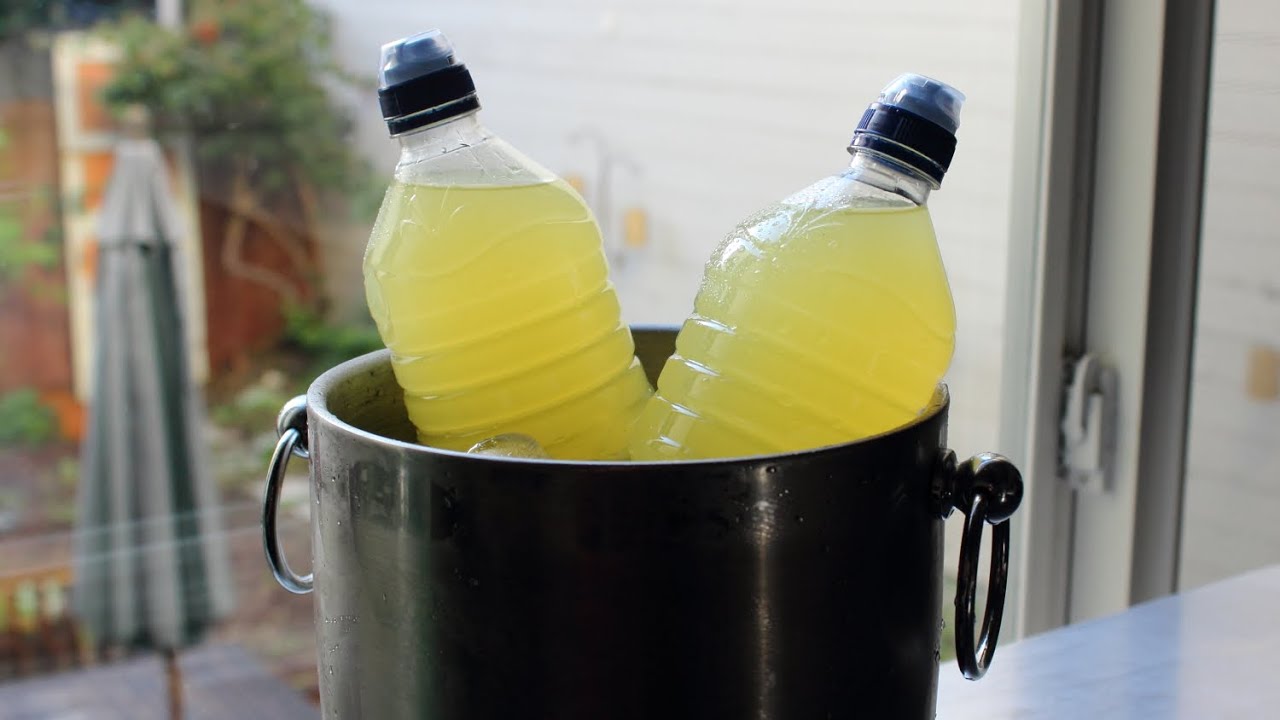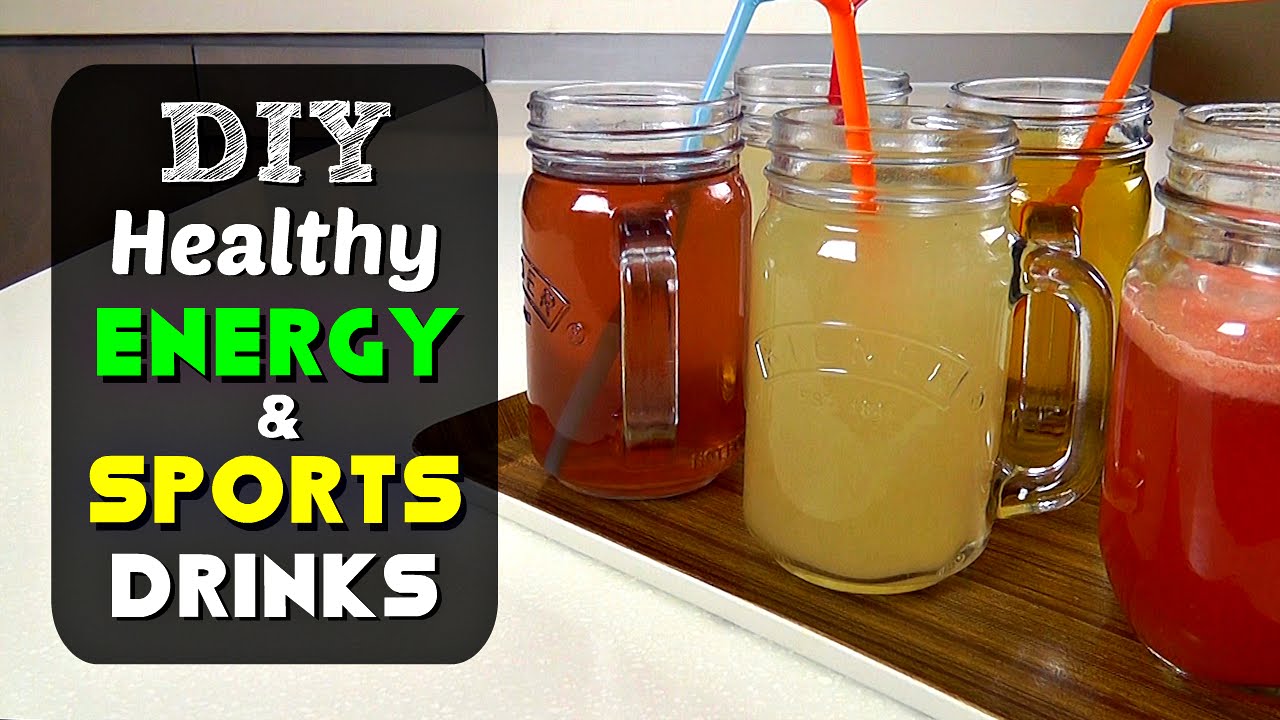The world of sports drinks can be confusing. However, each of them fulfills a specific role. For example, hypertonic drinks, rather than giving you super special powers, They are designed to energize you and replenish lost electrolytes on the go.
Body fluids maintain a perfect balance of electrolytes and water both inside and outside the cell. Magazine BMJ explains that, when this balance is broken, states of dehydration or hyperhydration can be reached that endanger the health of the athlete.
Drinks are classified according to their concentration of liquids and solids in relation to the human body. Hypertonic drinks offer a concentration of water, sugars and salts greater than blood. They are advantageous for certain types of exercises, but certain care must be taken during their administration. Keep reading!
When are hypertonic drinks used?
Hypertonic drinks are formulated to recharge the energy-storing carbohydrate in the liver and muscles, called “glycogen.” They can also maintain possible anabolism and fluid and electrolyte balance. Due to their hypertonic characteristics, they can even be added with proteins.
According to a study in Journal of Applied Physiology, they are used as recovery drinks after intense exercise at low temperatures. Glycogen is limited, but can be saved by maintaining blood sugar through the supply of glucose.
Despite having a slow absorption rate, it helps replenish glycogen stores. The body tends to absorb liquids faster than solid foods.
Research explains that, by adding carbohydrates to the drink and consuming it at a rate of 1 gram per minute, decreases the use of glycogen stored in the liver by 30%. For this reason, in exercise exercises, the carbohydrates in energy drinks improve the athlete’s performance.

Why should they be used in intense exercises, but at low temperatures?
Hypertonic drinks have a carbohydrate concentration greater than 8%. When ingested, the body releases water to dilute it until it equals the plasma concentration. This can cause dehydration in the athlete.
So, hypertonic drinks are not recommended in situations where it is very hot or if the athlete sweats excessively. They are designed to compensate for energy expenditure through carbohydrates, but not an excessive intake of fluids.
On the other hand, the inclusion of proteins is justified to stimulate the synthesis of damaged muscle structures during sports practice. It also helps produce more glycogen when carbohydrate availability is not correct.
Read also: Sports drinks: types, functions and recipes
How much hypertonic drinks should I consume?
When there is a need to recover all the nutrients lost during exercise, it is recommended to drink 1 hypertonic drink at the end of the session. Nevertheless, the amount may vary depending on the intake made during exercise, the time available for recovery or the objectives set.
In general, the amount depends on the intensity and duration of the exercise, as well as the weather conditions. In the magazine Science & Sport point out that stomach emptying depends on several factors, especially of the dissolved solids in the drink and its energy value.
From 600 milliliters, the greater the volume of gastric content, the faster the emptying. Thus, as the volume decreases, the stomach empties more slowly.
For this reason, to maintain an adequate emptying, the ideal is replenish the amounts removed by ingesting the drink repeatedly.
- Optimal intestinal absorption is calculated for water between 600 to 800 milliliters, and 60 grams for glucose.
- If more than 1.2 liters of fluids are ingested per hour, the surpluses can accumulate and cause intestinal discomfort.
Also read: Health Risks of Energy Drinks
How long does it take for the body to absorb each drink?
In a post by Medicine and Science in Sports and Exercise, A group of sports experts defined that the amount of carbohydrates that should be supplied in the drink depends on the following:
- The limit of glucose utilization by the athlete, which is at 60 grams per hour. The maximum amount to be supplied is reached with 1200 milliliters of the drink in 1 hour, as long as the solution contains more than 8% carbohydrates.
The American College of Sports Medicine recommends that hypertonic beverages have a high glycemic carbohydrate so that it is absorbed quickly into the bloodstream. In addition, he maintains that the best use of the drink is achieved with 75% of a mixture of glucose, sucrose, fructose or maltodextrin.
- The limit of gastric emptying and intestinal absorption of the drink. The time it takes for the stomach to empty 1 liter of liquid ranges from 1 to 1.5 hours.
Differences between sports drinks
Drinks with salts or electrolytes are used for high performance exercises; their concentrations can be different and, therefore, their application in sport. In addition to hypertonic drinks, there are others such as isotonic and hypotonic. Let’s see what their differences are.
Isotonic drinks have between 4 and 8% sugars, and electrolytes are at the same osmotic pressure as blood, that is, 330 milliosmoles per liter. When ingested, it is absorbed at once from the intestine and passes without difficulty into the blood. For this reason, its components are assimilated quickly and optimally.
These drinks are ideal for intense exercises, hot environments or when the athlete sweats a lot. It helps to replace fluids, electrolytes and glucose as a source of energy. Other advantages are as follows:
- Delayed fatigue.
- Decreased risk of cramps.
- Better performance.
- Accelerated recovery process.
In hypotonic beverages, the salt concentration is lower than that of blood plasma. They are ideal for moderate or low intensity exercises, with little sweating, that last less than 1 hour and do not require an extra supply of electrolytes.

Can I replace the hypertonic drink with another energy drink?
In the hypotonic ones, carbohydrates are not required. Young coconut water is a good example, as it contains less than 4% sugar, and hydrates quickly. Therefore, it is enough to replace fluids before, during and after exercise.
It must be taken into account that each drink fulfills a specific function, depending on the requirement and type of high-performance exercise. Hypertonic drinks are formulated with more than 8% carbohydrates and electrolytes. Its main function is to recharge energy rather than hydrate.
Therefore, its intake is recommended to recover the energy expended during high performance exercise at low temperatures. In fact, the ideal is to first consult a nutritionist and sports expert. A concentrated orange or carrot juice with a pinch of salt are excellent examples of natural hypertonic drinks.
